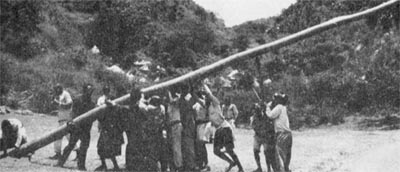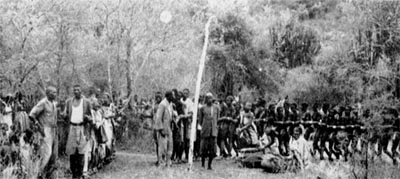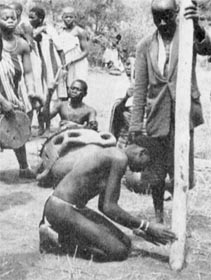|
(b) Tshivhuyu (the magic pole, lit. small baobab tree). After a night's dancing, the novices should find that a pole has mysteriously appeared somewhere near the courtyard. At one domba, however, it was planted in broad daylight while the novices were banished to the council hut! One boy climbs the pole and pulls out the feather on the top; he sticks it in his hair, brings it down and gives it to the next candidate, who climbs and replaces it in the pole. All other boys repeat the exercise. The girls kneel at the bottom of the pole and slide their hands down it. The phallic symbolism is obvious. All the time, graduates and married women dance domba. The master of initiation may recite certain milayo (e.g. Nos. 192-194) while the girls are near the pole.
|

A group of men raises the tshivhuyu pole in the middle of the morning, whilst the novices are kept away. It should have been planted during the night! |
|

Married people dance (on the left) while novices prepare to climb or honour the pole. The pole at this domba was discovered in a clearing when the novices returned from the river, and it had a feather on top. |
|

Girls knee at the bottom of the pole and slide their hands down. |

Each one of them losha humbly. |
Video Clip
|
Next |
|
To return, click 'Back' in the browser. |
|